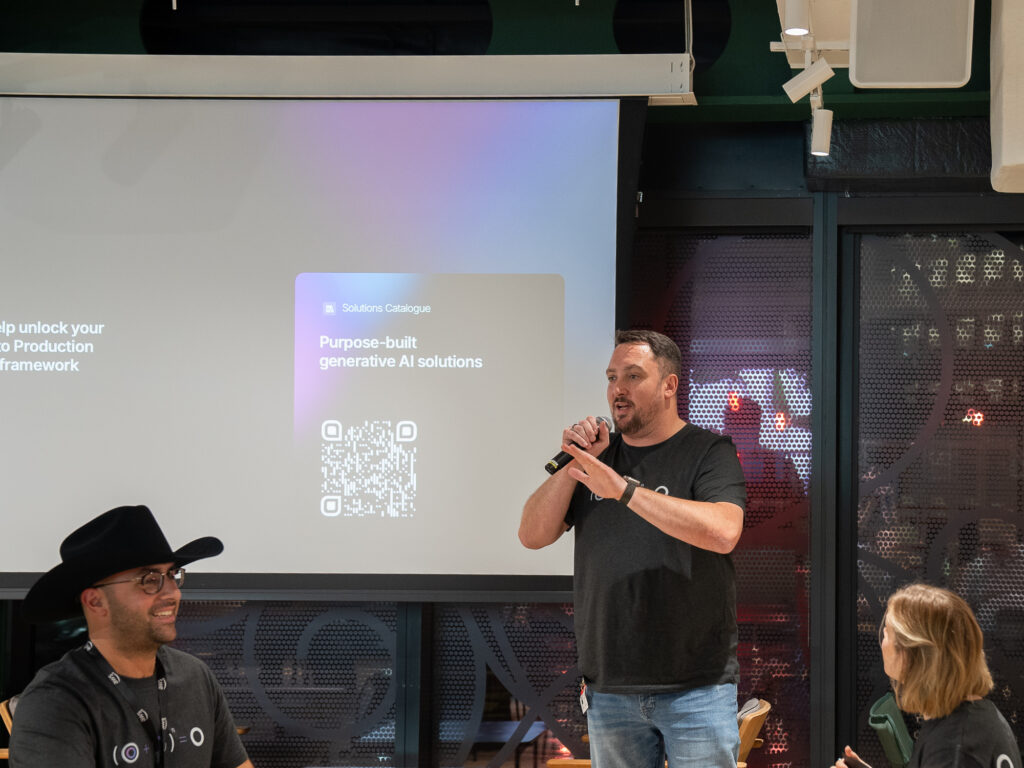AI-driven content localisation: Breaking language barriers in the media & entertainment industry
- Categories
- Date
- Author
- Industry, Generative AI
- March 18, 2024
- Jodie Rhodes
Localising content for international audiences has posed ongoing challenges in the media and entertainment industry. Accurate dubbing, subtitling, and cultural adaptation all require a lot of time and resources. With the rise of generative AI capabilities however, content localisation has become faster, cheaper and more scalable than ever before. As a specialist AWS data and AI partner, Firemind is uniquely positioned to help media and entertainment companies to automate localisation workflows, using AWS services.
The natural-sounding voices generated by Polly’s deep learning technologies can mimic the unique flow, tone and emotional delivery of the original actors.
When dubbing a movie, for example, Polly can clone the voice of the lead actor and translate their dialogue into another language while largely preserving the emotional intent and character of the performance. Viewers watching the dubbed version will still feel connected to the characters even though the language has changed.
This voice cloning capability allows media to reach international markets cost-effectively. For example, the Washington Post case study shows how they launched a new feature that reads select articles aloud using text-to-speech from Amazon Polly.
Another successful case study includes Trinity Audio that uses Amazon Polly, to provide an audio option with an easy plug-and-play solution. Amazon Polly turns text into lifelike speech and has over 60 voices available in 29 languages.
Multilingual subtitle generation
Amazon Transcribe makes it easy to generate high-quality subtitles for video content in dozens of languages. Using automatic speech recognition, Amazon Transcribe first transcribes the source audio track into text. It then leverages Amazon Translate to instantly convert those subtitles into over 100 other languages. This allows global companies to massively expand the reach of their videos by offering localised subtitles with just a few clicks. Content creators no longer need to outsource translation work or spend months coordinating human translation teams. Transcribe can sync the translated subtitles, frame-accurately, to the original audio track – so timing remains consistent. Viewers watching dubbed versions feel engaged as the subtitles match with a high accuracy, what is being said.
With Transcribe, companies can now automatically localise instructional videos, product demonstrations and news and entertainment content, into the languages their global customers demand most. This is demonstrated in this Formula 1 case study, which shows how they were able to build a fully automated workflow to create closed captions in three languages and broadcasting to 85 territories using Amazon Transcribe.
The automated process also enables near real-time subtitling of live streams. This improves accessibility worldwide, while reducing subtitling costs compared to traditional translation workflows. Another example, in this case study with NASCAR, where they were able to cut subtitling costs by 97% by leveraging Amazon Transcribe to enhance user engagement with automated video subtitles.
Cultural adaptation through AI
Amazon Comprehend and Amazon Lex both utilise advanced natural language processing and machine learning models trained on vast language datasets. This gives them the ability to understand cultural context and references within text, audio, and images.
When localising content for international markets, direct translations are not always appropriate, as some cultural elements may not translate well. For example, jokes, idioms, symbols, or other culturally specific aspects, could lose their intended emotional effect or even cause offence.
With Comprehend and Lex, media companies can leverage AI to help adapt cultural elements sensitively on a case-by-case basis. The services can identify culturally specific aspects of the original content and provide recommendations on how to localise them, while preserving the overall storytelling impact and emotional tone for target audiences.
This could involve substituting cultural references, modifying idioms, or reworking jokes and humour styles to land properly for each region. By automating this type of cultural localisation at scale, media businesses can reach global customers faster and more cost-effectively versus traditional human-led methods. This unlocks new monetisation opportunities, from expanding into international markets in a culturally sensitive manner.
AWS localisation solution architecture
Firemind’s AI-driven localisation framework leverages AWS services to transform the media and entertainment industry. By integrating Amazon Polly for voice cloning, Amazon Transcribe and Translate for multilingual subtitles, and Amazon Comprehend and Lex for cultural adaptation, this solution automates content localisation at scale.
The architecture starts with Amazon Transcribe, converting spoken audio to text, and Amazon Translate, generating subtitles in multiple languages. Amazon Polly creates lifelike audio tracks from translated text, preserving emotional integrity. For cultural adaptation, Amazon Comprehend analyses context, while Amazon Lex fine-tunes dialog and expressions. AWS Lambda and Amazon Step Functions orchestrate these workflows, with Amazon S3 managing media assets and Amazon CloudFront ensuring efficient global delivery.
With monitoring and optimisation via Amazon CloudWatch, this scalable and cost-effective solution processes high volumes of content across diverse languages and regions efficiently.

The Future of AI-driven localisation
As AI language models continue to advance, the future of content localisation looks even more exciting. Models with broader language coverage and deeper cultural understanding will further reduce barriers. Media companies will be able to personalise localisation by region, city or even individual consumer preferences. Real-time translation and localisation of live video content like sports, concerts or online events will also become possible.
To conclude
As you’ve seen, AI-powered localisation is transforming the media and entertainment industry, by allowing content to reach massive new global audiences at a high speed and scale. It’s breaking down divisions and connecting people worldwide.
To find out how Firemind is enabling media and entertainment businesses to scale, break barriers and automate repetitive and time-consuming tasks, reach out using the form below.
Get in touch
Want to learn more?
Seen a specific case study or insight and want to learn more? Or thinking about your next project? Drop us a message!
Explore latest insights from Firemind
View all
Cassio Milani joins Firemind as an Senior Solutions Architect

Personalising Retail Experiences with Generative AI: Beyond Recommendations
